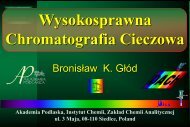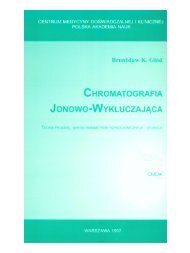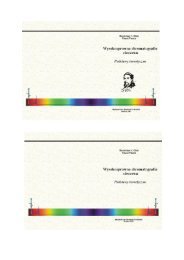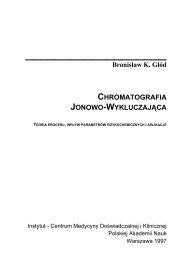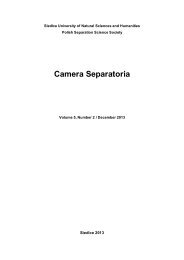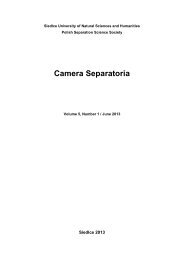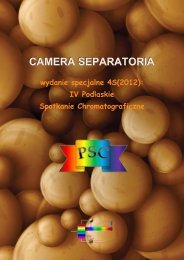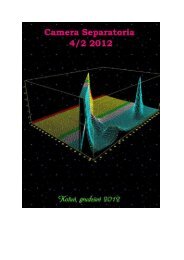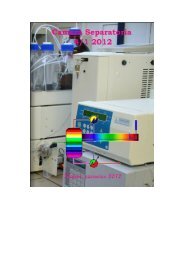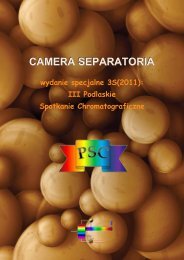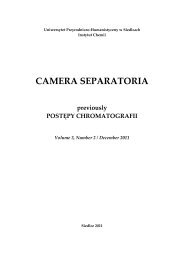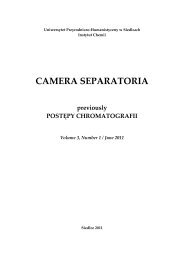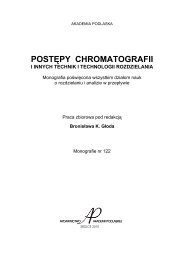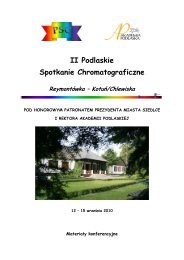CamSep 5 S
Create successful ePaper yourself
Turn your PDF publications into a flip-book with our unique Google optimized e-Paper software.
VARIOUS ELECTROANALYTICAL ASSAYS USED FOR THE<br />
DETERMINATION OF TOTAL ANTIOXIDANT POTENTIAL (TAP)<br />
IN FOOD<br />
Bronisław K. GŁÓD, Iwona KIERSZTYN, Paweł WANTUSIAK, Paweł PISZCZ<br />
Siedlce University of Natural Sciences and Humanities<br />
Department of Analytical Chemistry ul. 3 Maja 54, 08-110 Siedlce; Poland<br />
URL: dach.ich.uph.edu.pl, e-mail: psc1@onet.eu<br />
Free radicals play an important role in living organisms. Most of them are very reactive,<br />
usually characterized by strong oxidizing properties. They are the reason, transition step, product or<br />
side-effect of many diseases and aging. Excess of them and/or oxidants are removed by the<br />
scavengers of free radical or antioxidants, respectively. The both terms are often used alternatively.<br />
It turns out that the antioxidant properties of real samples are often better described by the, so<br />
called, total antioxidant potential (TAP), although other names are also used. It is proportional to<br />
the sum of the products of the concentrations and reaction rate constants of all antioxidants in the<br />
sample. In the presentation new, elaborated by us, TAP assays are discussed.<br />
In cyclic and differential pulse voltammetry the TAP measure is peak surface area measured<br />
in special coordinates. Much more sensitive measurements can be obtained using the<br />
electrochemical detection in HPLC. Described in the literature TAP assays are usually based on the<br />
kinetic photometric measurements. The stable, or generated, radicals react competitively with the<br />
test sample and the so-called sensor. TAP measure is the induction time of photo- or fluorometric<br />
signal. Improved assays related to the peroxyl or DPPH radicals are discussed. The<br />
chromatographic TAP measurements are static techniques. The TAP measure is decrease of the<br />
surface area of chromatographic peak of the reaction product of radical with sensor. Its value refers<br />
to the hydroxyl radicals, the strongest natural oxidant/radical.<br />
39




